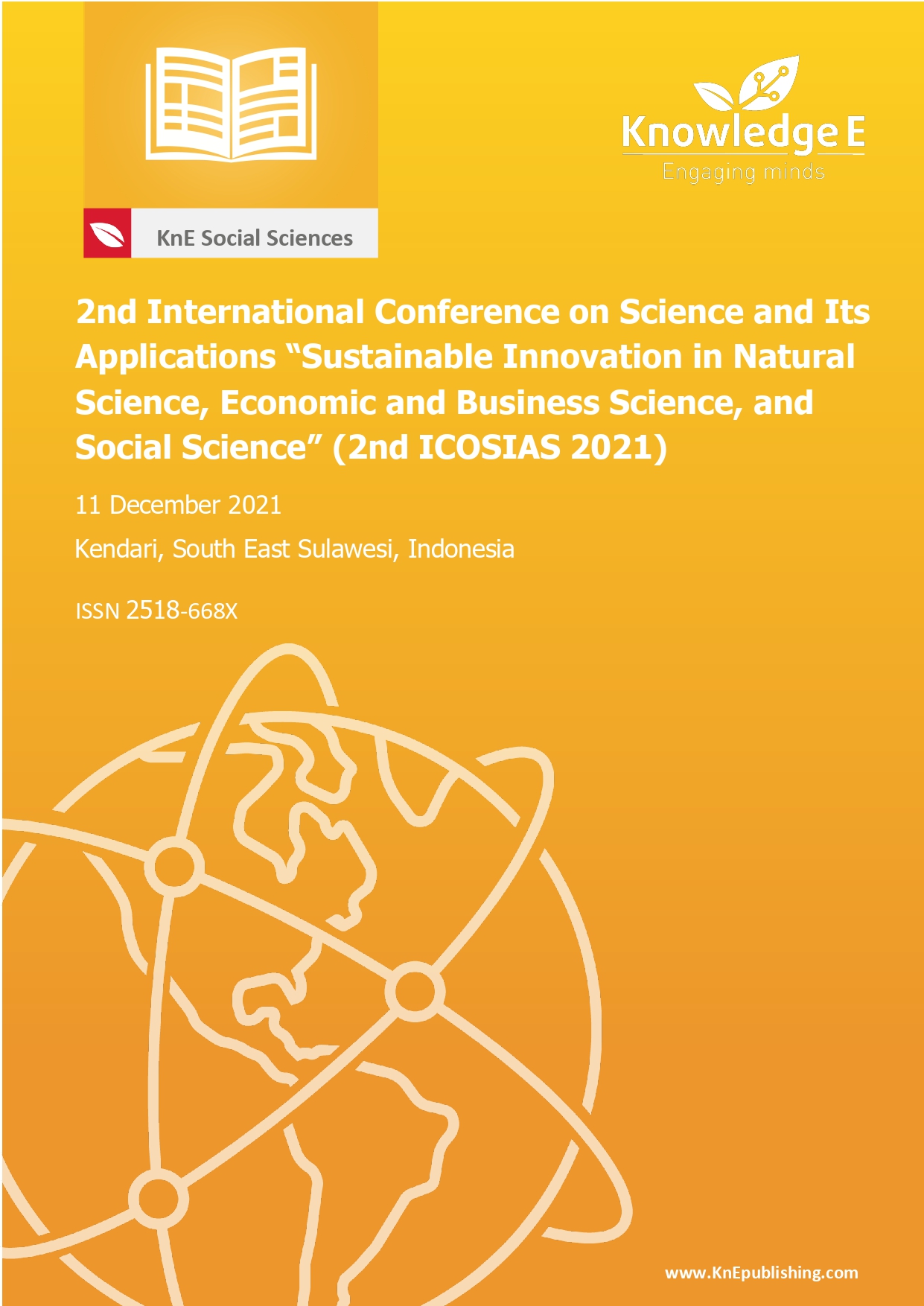A Comparison of Conventional Face-to-Face, Online and Hybrid Methods of Course Delivery in the `English as a Foreign Language' Classroom
DOI:
https://doi.org/10.18502/kss.v8i2.12746Abstract
The advent of online and hybrid learning in the English as a Foreign Language classroom has sparked an extended debate. This paper aims to contribute to this ongoing debate by scrutinizing the effectiveness of the three different instructional methods: online, hybrid, and conventional face-to-face classrooms for the teaching of English grammar in the EFL setting. Students in online sections reported more challenges than those in the hybrid and face-to-face sections. The implications of this study are discussed in this paper.
Keywords: Face-to-face, Hybrid, Instruction, Learning, Online
References
Livingstone KA, Campus T, Turkeyen ECD. Implications of implementing a hybrid learning approach at the University of Guyana. Baraton Interdisciplinary Research Journal. 2013;3(2):53-62.
Bernard RM, Abrami PC, Lou Y, Borokhovski E, Wade A, Wozney L, et al. How does distance education compare with classroom instruction? A meta-analysis of the empirical literature. Review of educational research. 2004;74(3):379-439.
Detwiler JE. Comparing student performance in online and blended sections of a GIS programming class. Transactions in GIS. 2008;12(1):131-44.
Alberth, Wiramihardja E, Uden L. WhatsApp with English language teaching? Some practical ideas and strategies. International Journal of Technology Enhanced Learning. 2020;12(3):262-74.
Todd EM, Watts LL, Mulhearn TJ, Torrence BS, Turner MR, Connelly S, et al. A meta- analytic comparison of face-to-face and online delivery in ethics instruction: The case for a hybrid approach. Science and Engineering Ethics. 2017;23(6):1719-54.
Kentnor HE. Distance education and the evolution of online learning in the United States. Curriculum and teaching dialogue. 2015;17(1):21-34.
Spencer D, Temple T. Examining Students’ Online Course Perceptions and Comparing Student Performance Outcomes in Online and Face-to-Face Classrooms. Online Learning. 2021;25(2):233-61.
Shelley DJ, Swartz LB, Cole MT. Learning business law online vs. onland: A mixed method analysis. International Journal of Information and Communication Technology Education (IJICTE). 2008;4(2):54-66.
Topper A. Are they the same? Comparing the instructional quality of online and facetoface graduate education courses. Assessment & Evaluation in Higher Education. 2007;32(6):681-91.
Pucel DJ, Stertz TF. Effectiveness of and student satisfaction with web-based compared to traditional in service teacher education courses. Journal of STEM Teacher Education. 2005;42(1):2.
Ury G. A comparison of undergraduate student performance in online and traditional courses. Journal of Computing Sciences in Colleges. 2004;19(4):99-107.
Burkhardt JM, Kinnie J, Cournoyer CM. Information literacy successes compared: Online vs. face to face. Journal of Library Administration. 2008;48(3-4):379-89.
Atchley W, Wingenbach G, Akers C. Comparison of course completion and student performance through online and traditional courses. International Review of Research in Open and Distributed Learning. 2013;14(4):104-16.
Ward B. The best of both worlds: A hybrid statistics course. Journal of Statistics Education. 2004;12(3).
Young G. ’Hybrid’Teaching Seeks to End the Drive Between Traditional and Online Instruction. The Chronicle of Higher Education. 2002.
Abdullat A, Terry N. Assessing the effectiveness of virtual learning in a graduate course in computer information systems. Information Systems Education Journal. 2005;3( 34):3-8.
Alberth A. Critical success factors in online language learning. TEFLIN journal. 2011;22(1):16-33.
Terry N, Lewer J. Campus, online, or hybrid: An assessment of instruction modes. Journal of Economics and Economic Education Review. 2003;4(1):23-34.
Gutierrez D, Russo S. Comparing Student Performance, Attitudes And Preferences In An Introduction To Business Course: Online, Hybrid And Traditional Delivery Methods Who Makes The A Grade? College Teaching Methods & Styles Journal (CTMS). 2005;1(3):83-90.
Rivera JC, Rice ML. A comparison of student outcomes and satisfaction between traditional and web based course offerings. Online Journal of Distance Learning Administration. 2002;5(3):151-79.
Banas EJ, Emory WF. History and issues of distance learning. Public Administration Quarterly. 1998:365-83.
O’Neal K, Jones WP, Miller SP, Campbell P, Pierce T. Comparing web-based to traditional instruction for teaching special education content. Teacher Education and Special Education. 2007;30(1):34-41.
Reasons SG, Valadares K, Slavkin M. Questioning the hybrid model: Student outcomes in different course formats. Journal of Asynchronous Learning Networks. 2005;9(1):83-94.
Rovai AP, Barnum KT. On-line course effectiveness: An analysis of student interactions and perceptions of learning. International Journal of E-Learning & Distance Education/Revue internationale du e-learning et la formation à distance. 2003;18(1):57-73.
Olson TM, Wisher RA. The effectiveness of web-based instruction: An initial inquiry. International Review of Research in Open and Distributed Learning. 2002;3(2):1-17.
Tabachnick B, Fidell L. Using Multivariate Statistics (Second EditionK New York. NY: HarperCollins Publishers Inc. 1989.
Fields A. Discovering Statistics Using SPSS. Sage Publications. London, UK. 2005.
Cohen J. Statistical power analysis for the behavioral sciences: Routledge; 2013.
Alberth, Wiramihardja E, Kuasa W, Lio A, Badara A, editors. Towards „the best of both worlds“: what learning activities are conducted where? 11th International Conference on Engineering Education (EDUCATION15); 2018; Salerno, Italy.
Mayes T. Learning technology and learning relationships. Teaching & learning online: Routledge; 2018. p. 16-26.
Hidayah N, Indriani L. Real Time Feedback in English Microteaching Practice: A Case Study on Online Learning. Metathesis: Journal of English Language, Literature, and Teaching. 2021;5(2):155-67.
Bowo TA, Sari EDP, Dewi MK. Students’ Perception in Using Social Media as. Language Learning. Journal of Language and Health. 2021;2(1):7-16.
Achacoso M. Evaluating technology and instruction: Literature review and recommendations. Texas: The University of Texas. 2003;3
Köroğlu ZÇ, Bilici ÖU. Flipgrid for Developing and Assessing English Language Learners’ Speaking Skills. Policies, Practices, and Protocols for the Implementation of Technology Into Language Learning: IGI Global; 2022. p. 96-113.
Beno M, Hvorecky J, editors. Pandemic enforcement: E-working and e-learning joined their efforts globally. SHS Web of Conferences; 2021: EDP Sciences.
Clark RE. Reconsidering research on learning from media. Review of educational research. 1983;53(4):445-59.

